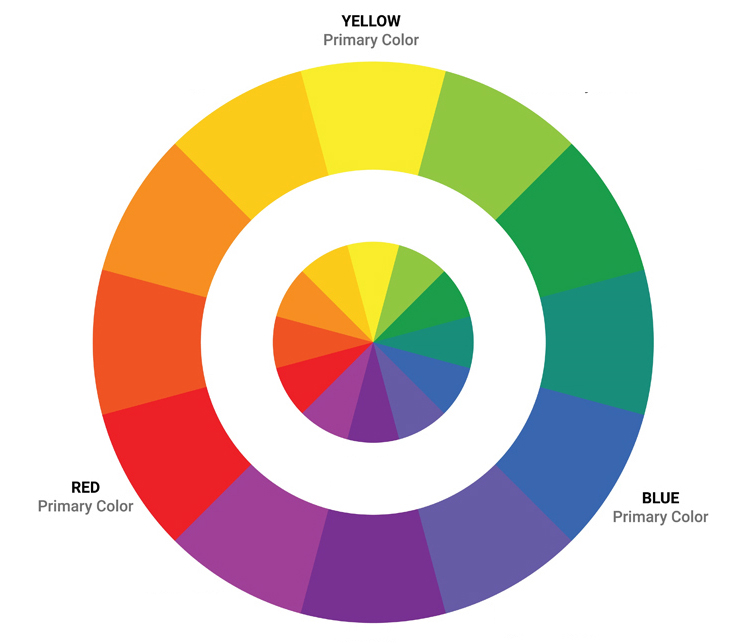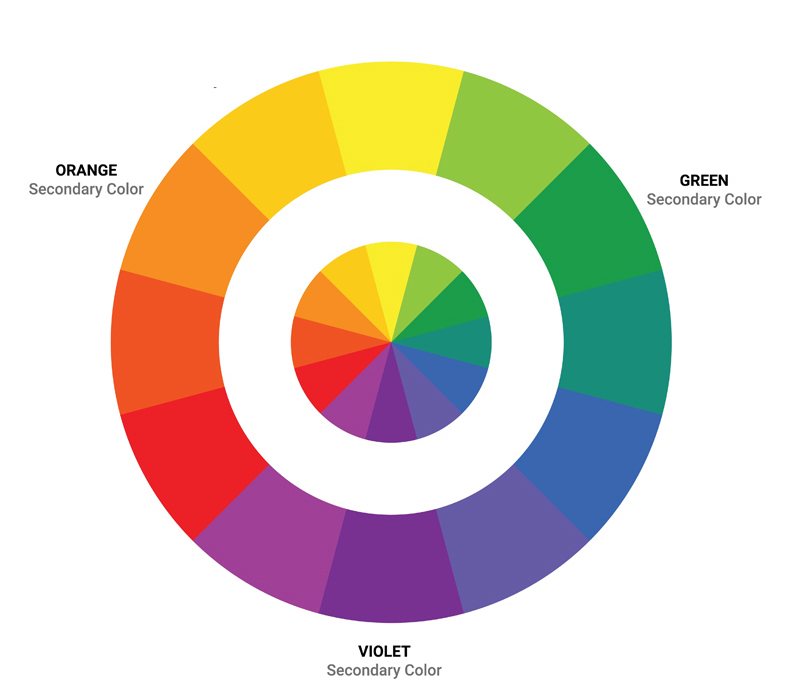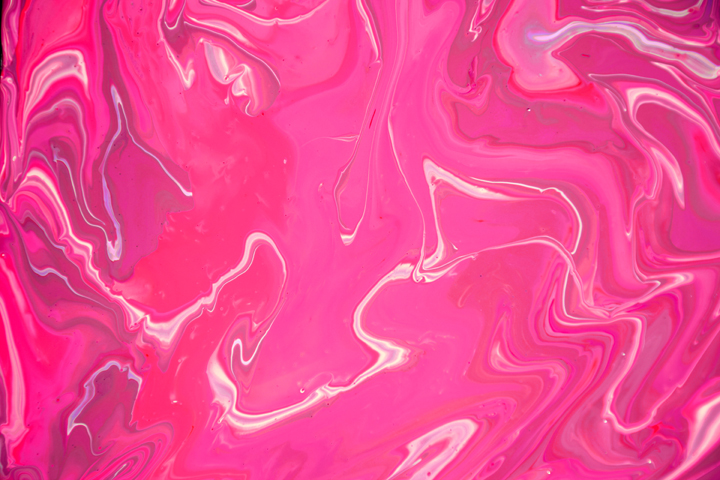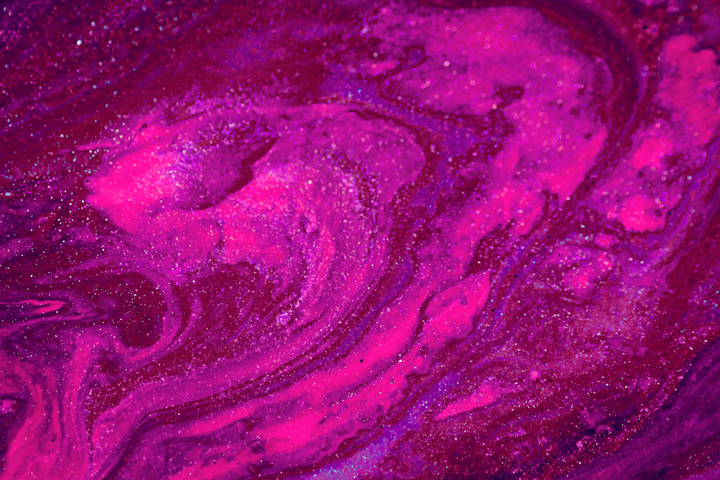As an artist, knowledge of color theory and color mixing is essential. So, if you want to know how to make magenta with paint, you’re in the right place!
In this article, we’ll look at the color magenta – what it is and how to make it. Then, you’ll learn exactly how to make magenta with acrylic paint, so you can use it in your artwork.
That is especially helpful if you’re caught out and don’t have the color magenta handy. But it will also help you understand how colors work. So, you’ll feel more confident as an artist.
Let’s dive in and look more closely at the color magenta.
The Color Magenta

Magenta is a vivid color that is sure to make an impact. But a lot of people argue about exactly what shade it is. For example, some consider it bright pink, while others say it’s more of a purple hue.
Basically, magenta is a shade of purple with a lot of vibrancy and a red undertone. You could call it reddish-purple or purplish-red – both terms would be accurate.
Magenta is closer to red than blue on the color wheel, although that depends on how you mix it. As with any color, the exact shade can vary a lot.
Another interesting fact is that there is no such thing as magenta on the light spectrum. Instead, we see pink light when red and blue wavelengths are mixed together.
Now, let’s move on to how you can make magenta with paint! You can use these tips for your paintings to create the perfect shade of magenta.
What Colors Make Magenta?
You might already know that there are primary, secondary, and tertiary colors.
The primary colors are red, yellow, and blue (at least, according to the RYB color model). We’ll stick with this traditional color model for now as it’s most relevant for mixing paints.

You can’t make any of the primary colors by mixing other colors together. But you can make almost any other color with just these three primary colors.
And then, you have secondary colors. They are what you get if you mix two primary colors. Magenta is a secondary color, as you can make it by mixing red and blue in the correct ratio.

That’s easy to understand if you look at a color wheel. Magenta sits between blue and red, as it’s the result of these two colors combined.
But magenta is closer to red on the wheel, as it has a heavier red bias. That means there is more red than blue in the color magenta. And that’s what sets it apart from violet, which has equal amounts of red and blue.
There are other ways to make the color magenta, too. These methods may not be as straightforward, but having more options is always good. That way, you’ll have no trouble making magenta, regardless of your available colors.

So, you can also make magenta by mixing red with a purple shade, for example, violet.

And another possibility is mixing purple and pink. You’ll create magenta (or a color very close to it) with each of these methods.
How to Make the Color Magenta with Acrylic Paint
Magenta is a gorgeous, vivid shade that will add a pop of color to your paintings. And the good news is that it’s also very easy to mix.
Follow these steps, and you’ll soon have the perfect shade of magenta.
Mix red and blue paint in equal proportions
First, you can take red and blue paint and mix them together. Start by using equal proportions of each color – you’ll adjust the ratio later on.

It’s easiest to use a palette to mix paints. Take some of each color on your paintbrush, washing your brush in between. Then, mix thoroughly until you have a smooth, even result. Swirl the paints together in a circular motion to achieve this. And you’ll create the color violet – one step closer to magenta.
Take care not to add too much blue paint, especially if you use a darker shade. You want red to be the stronger color of the two.
You might need to test different shades of blue and red. Even a tiny change in shade can make a big difference to the result you’ll get. But for now, follow these steps to make your magenta paint.
Add a little more red until you have the right color
Now, you’ve made a violet shade by mixing equal amounts of blue and red. But it’s not quite magenta yet. For that, you’ll need to add a bit more red until you get the desired effect.

My best tip is to add a little at a time. It’s easy to add more, but it’s hard to go back if you overdo it.
If you want a very bright magenta, you could add a little pink instead of or in addition to red. It will create a lighter, brighter effect than using red alone.
And if you do go too heavy-handed with the red, don’t worry. You can even it out again by mixing in a bit more blue paint.
Adjust the color to make it darker
Once you have the desired color, you may still need to adjust the tone. For example, if you want a darker magenta, you can add either black or dark green.

You could also mix in a bit more dark blue, but that will skew the color towards violet.
When using black, take care as it can quickly overwhelm the color. So, use only a tiny amount to make a darker magenta.
If you use dark green instead of black, you’ll create a more muted shade of magenta. That’s because it makes the color less saturated.
Add white if you need a lighter shade of magenta
Finally, you might want to lighten your shade of magenta. The most obvious choice is to add some white paint. That will not only lighten it but make it less bright and vibrant.

If you want to maintain the brightness and saturation, you could use yellow instead of white. Choose a light shade that will make your magenta less dark without losing the vibrancy.
3 Paint Color Combinations to Make Magenta
Now, you have a good idea of how to mix the color magenta. But if you’re looking for specific paint color combinations, I’ve got you.
Here are some of the best paint colors to mix to make magenta. Test them out for yourself and see which combinations you like best!
You could mix:
- Crimson with quinacridone violet

- Cadmium red with cobalt blue

- Or Crimson with ultramarine blue

Each of these combinations will create a vibrant shade of magenta. Each one will differ a little. So, I recommend trying them out and seeing which shade you like the most.
Alternatives to the Color Magenta

If you’re looking for some out-of-the-tube alternatives to magenta, don’t fret. I get that you might not always have the time or energy to mix your own colors.
In that case, there are some substitutes you can use for the color magenta.
For example, many artists love the shad permanent rose. It’s a vibrant shade that’s close to magenta, but it has a pinkier bias. You can use it right from the tube if you’re short on time.
But if you add a little blue to the permanent rose, you’ll get a very authentic magenta color.
Another alternative is quinacridone violet. In a pinch, you can use it directly from the tube without mixing it with another color. It will look darker and more purple than magenta – but it’s not a bad approximation of the color. So, you’ll create a similar effect to magenta in your artwork.
However, you could also mix in a little crimson paint to get even closer to the color magenta.
The Wrap Up
By now, you’ve become an expert on the color magenta and how to mix it. So, you’ll never get caught out without this vibrant color.
You know all the tips and tricks for making magenta paint, plus some handy alternatives. So, mixing magenta paint should be quick and straightforward.
Let me know if you have any questions below! And follow Proactive Creative on Pinterest for more color theory content and inspiration!





